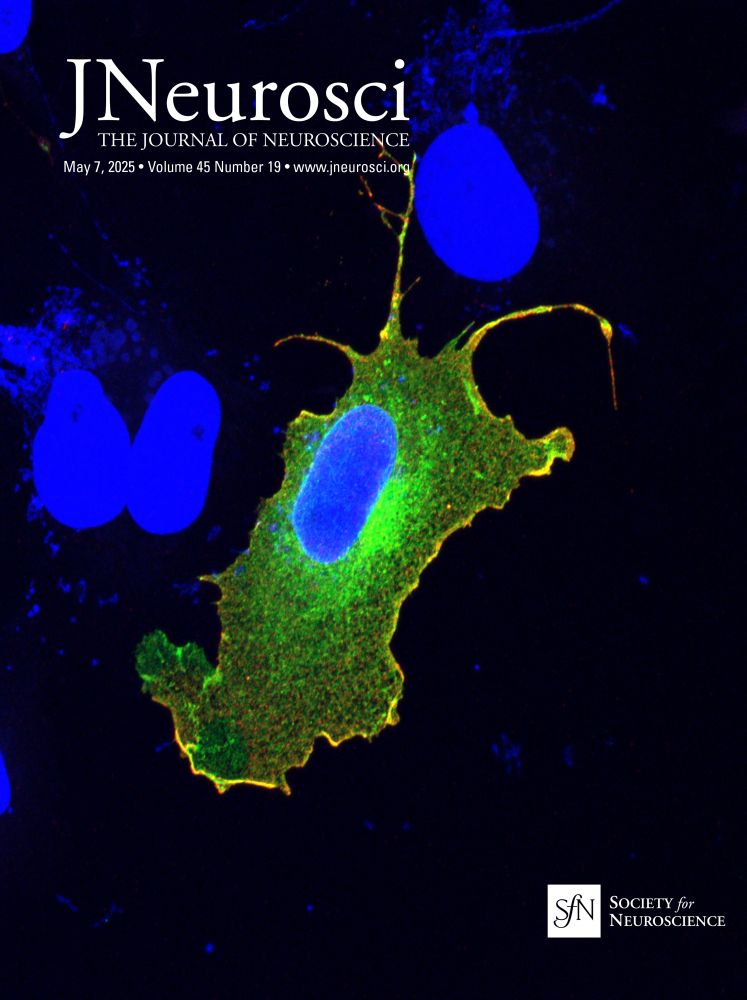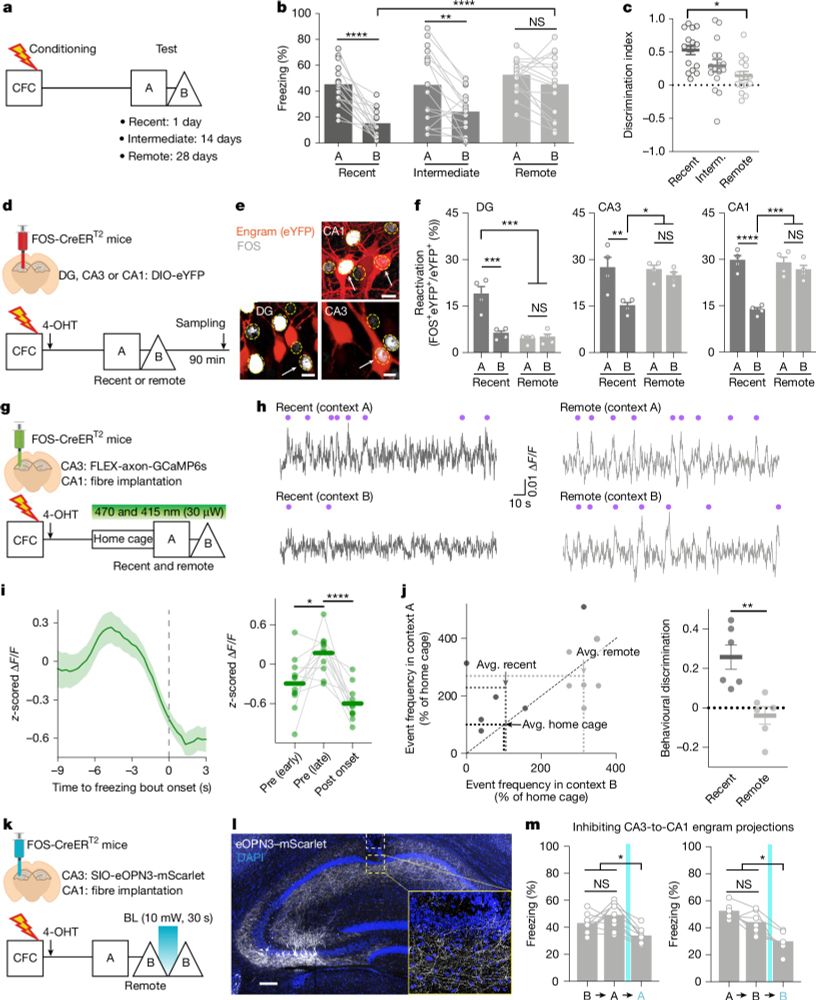
A striking image of the plasma jet in the blazar PKS 1424+240, seen head-on. The jet is threaded by a nearly perfect toroidal magnetic field (visualized in orange). Due to special relativity, high-energy gamma rays and neutrinos are strongly beamed toward Earth, even though the jet appears slow-moving from our perspective.
15 years of radio observations yielded this amazing view down the throat of a black hole.
We're looking into a jet of plasma shooting out from a supermassive black hole, called PKS 1424+240. The lines depict intense magnetic fields threaded through the jet. 🧪🔭
www.mpg.de/25171297/eye...
17.08.2025 23:23 — 👍 322 🔁 99 💬 8 📌 13
Work done in collaboration with Brett Foster and @nicolecrust.bsky.social
13.08.2025 05:22 — 👍 1 🔁 0 💬 0 📌 0
Poster Presentation
At #ccn2025 and interested in bridging animal and human neuroscience?
Stop by B121 this afternoon to see our investigation of the neural representations in spikes and field potentials and our surprising result that sometimes field potentials are better!
2025.ccneuro.org/poster/?id=t...
🧠📈
13.08.2025 05:21 — 👍 23 🔁 2 💬 1 📌 1

Turning pages, swiping screens, and hitting play: Is reading always the same to our brain?
Whether it’s on paper, screen or audio, there are more ways than ever to enjoy a good book. But do different formats engage the brain in the same way?
Whether it’s on paper, screen or audio, there are more ways than ever to enjoy a good book. But do different formats engage the brain in the same way?
Co-editor @catrinahacker.bsky.social explores in this week's post: pennneuroknow.com/2025/08/05/t...
#PsychSciSky #SciComm 🧠🟦 🧪 📖
05.08.2025 13:41 — 👍 18 🔁 7 💬 0 📌 1
As has been clear since April*, Vought intends a pocket rescission. This blanket hold is another tactic to maximize the size of that rescission. Rescission is THEFT from the public.
We have until Aug 15 to spend out the budget. CAL CONGRESS AND DEMAND THE HOLD BE LIFTED. Lives are on the line 🧪
*
30.07.2025 02:47 — 👍 5 🔁 5 💬 2 📌 0
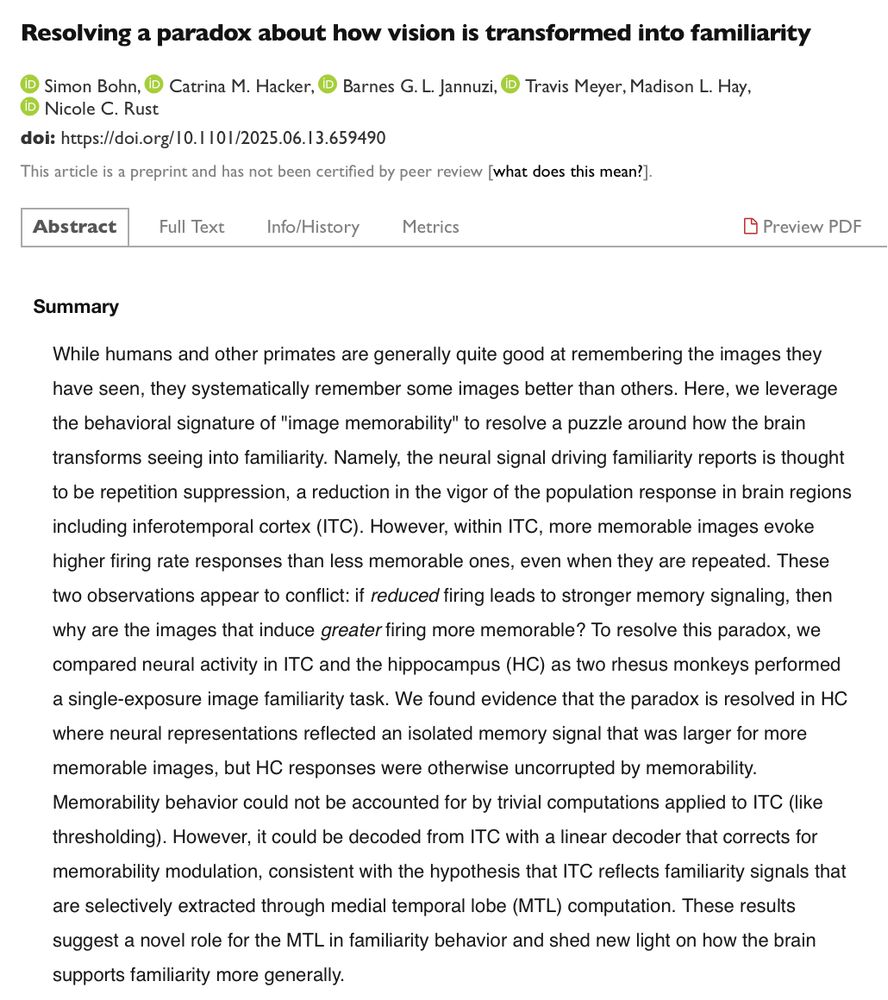
Resolving a paradox about how vision is transformed into familiarity
Simon Bohn, View ORCID ProfileCatrina M. Hacker, View ORCID ProfileBarnes G. L. Jannuzi, View ORCID ProfileTravis Meyer, Madison L. Hay, View ORCID ProfileNicole C. Rust
While humans and other primates are generally quite good at remembering the images they have seen, they systematically remember some images better than others. Here, we leverage the behavioral signature of "image memorability" to resolve a puzzle around how the brain transforms seeing into familiarity. Namely, the neural signal driving familiarity reports is thought to be repetition suppression, a reduction in the vigor of the population response in brain regions including inferotemporal cortex (ITC). However, within ITC, more memorable images evoke higher firing rate responses than less memorable ones, even when they are repeated. These two observations appear to conflict: if reduced firing leads to stronger memory signaling, then why are the images that induce greater firing more memorable? To resolve this paradox, we compared neural activity in ITC and the hippocampus (HC) as two rhesus monkeys performed a single-exposure image familiarity task. We found evidence that the paradox is resolved in HC where neural representations reflected an isolated memory signal that was larger for more memorable images, but HC responses were otherwise uncorrupted by memorability. Memorability behavior could not be accounted for by trivial computations applied to ITC (like thresholding). However, it could be decoded from ITC with a linear decoder that corrects for memorability modulation, consistent with the hypothesis that ITC reflects familiarity signals that are selectively extracted through medial temporal lobe (MTL) computation. These results suggest a novel role for the MTL in familiarity behavior and shed new light on how the brain supports familiarity more generally.
⚡ New preprint ⚡ Long ago, I heard a talk about our remarkable ability to remember 1000s of images, after seeing each only once. How do brains manage it? 🤔
After years, this reflects the answer I was looking for. Congrats to Simon Bohn et al.
www.biorxiv.org/content/10.1...
More: /1
17.06.2025 09:19 — 👍 93 🔁 11 💬 4 📌 2
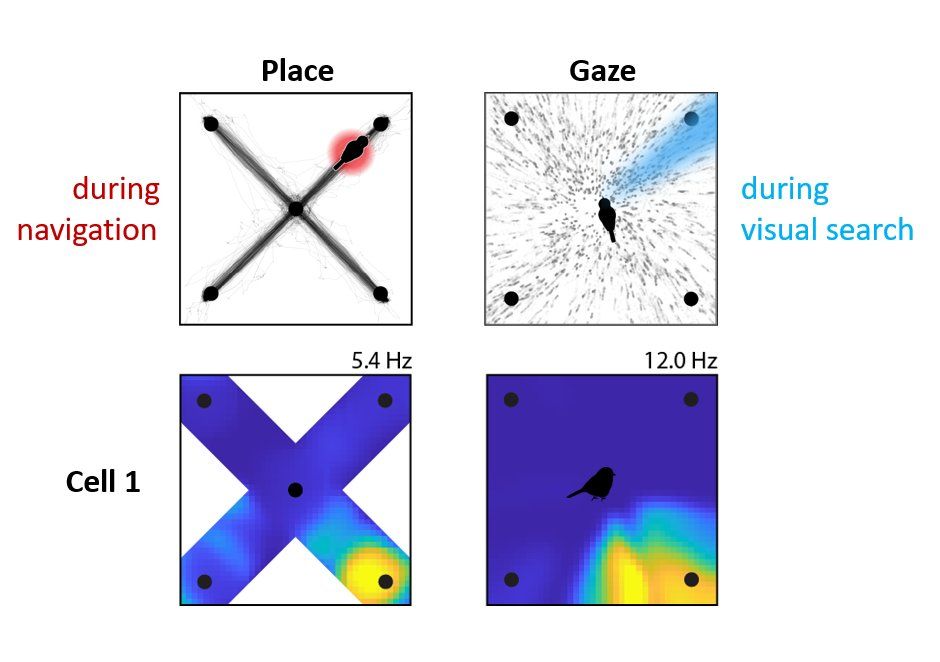
My latest Aronov lab paper is now published @Nature!
When a chickadee looks at a distant location, the same place cells activate as if it were actually there 👁️
The hippocampus encodes where the bird is looking, AND what it expects to see next -- enabling spatial reasoning from afar
bit.ly/3HvWSum
11.06.2025 22:24 — 👍 271 🔁 86 💬 10 📌 5
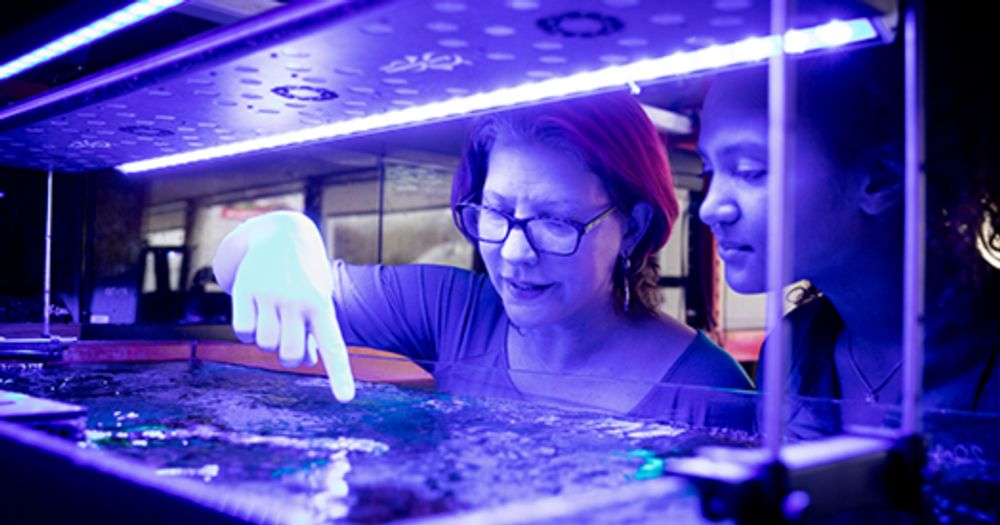
Cephalopods, vision’s next frontier
For decades, scientists have been teased by the strange but inaccessible cephalopod visual system. Now, thanks to a technological breakthrough from a lab in Oregon, data are finally coming straight…
The octopus brain has teased researchers since the 1960s, but recording from it seemed impossible. Cris Niell and his team’s calcium imaging experiments finally “showed that this brain could be studied,” says Sam Reiter.
By @callimcflurry.bsky.social
www.thetransmitter.org/vision/cepha...
27.05.2025 14:07 — 👍 22 🔁 7 💬 0 📌 2
OSF
New preprint! Statistical structure skews object memory toward predictable successors. Model simulations show how this bias can arise from the backward expansion of hippocampal representations.
w/co-first @codydong.bsky.social , @marlietandoc.bsky.social & @annaschapiro.bsky.social osf.io/yuxb6_v1
27.05.2025 12:32 — 👍 28 🔁 11 💬 0 📌 3
They would've found something to weaponize regardless. One of the most admirable things about science is its commitment to self-criticism. The fact that bad actors may capitalize on our legitimate concerns should never stop us from being honest and reflective about what we do.
25.05.2025 16:57 — 👍 77 🔁 16 💬 5 📌 1
Thank you @joulesriley.bsky.social for covering such an important topic!
Curiosity-driven research is essential, even when we're not certain exactly what application it might have down the line. The two examples Jules highlights show how investing in basic research now has huge payout later.
21.05.2025 13:38 — 👍 2 🔁 0 💬 0 📌 0
This highlights the point that comparisons between humans and machines are continually muddied by a lack of distinction between evolution and development, both of which contribute to learning in the broad sense.
19.05.2025 15:24 — 👍 27 🔁 4 💬 4 📌 0
(1/6) Thrilled to share our triple-N dataset (Non-human Primate Neural Responses to Natural Scenes)! It captures thousands of high-level visual neuron responses in macaques to natural scenes using #Neuropixels.
11.05.2025 13:33 — 👍 120 🔁 42 💬 2 📌 1

AI Changes Science and Math Forever | Quanta Magazine
An exploration of how artificial intelligence is changing what it means to do science and math, and what it means to be a scientist.
In a new special series called “Science, Promise and Peril in the Age of AI,” @quantamagazine.bsky.social looks far beyond AI-based research tools to explore how #AI is changing what it means to do #science and what it means to be a scientist.
www.quantamagazine.org/series/scien...
09.05.2025 20:03 — 👍 2 🔁 2 💬 0 📌 0
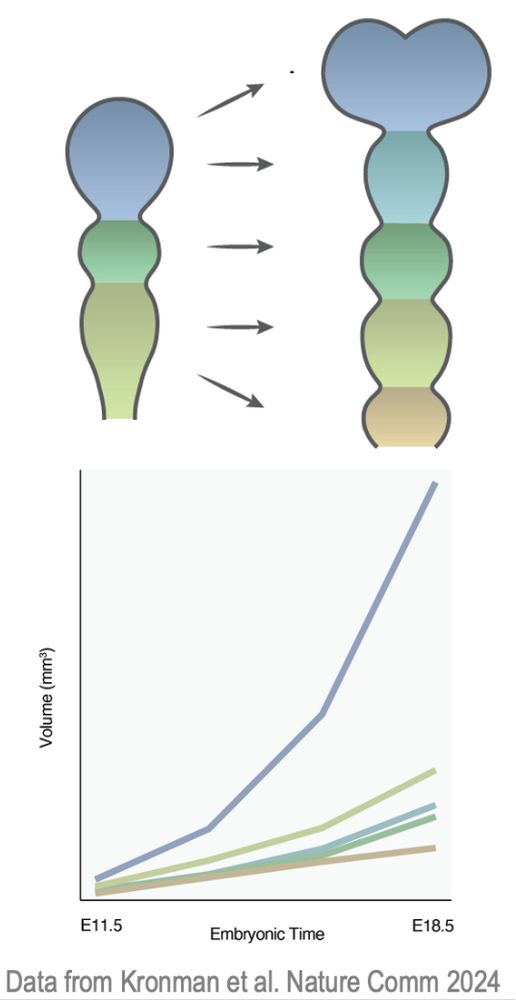
Why does the forebrain expand dramatically while other neural regions grow less? Our new publication reveals progenitor metabolism critically shapes region-specific brain growth. Thread below. authors.elsevier.com/a/1k-udL7PXu...
05.05.2025 16:52 — 👍 109 🔁 40 💬 3 📌 3
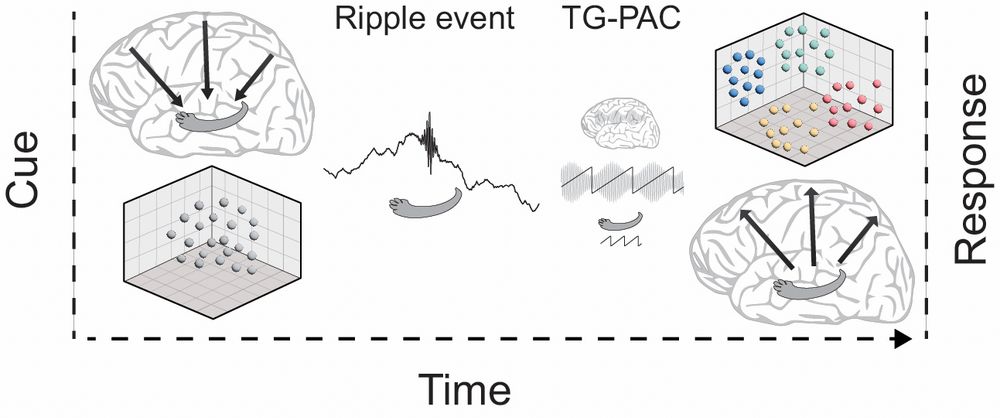
🧠✨How do we rebuild our memories? In our new study, we show that hippocampal ripples kickstart a coordinated expansion of cortical activity that helps reconstruct past experiences.
We recorded iEEG from patients during memory retrieval... and found something really cool 👇(thread)
29.04.2025 05:59 — 👍 168 🔁 64 💬 5 📌 5

The representation of mood in primate anterior insular cortex
Understanding how the brain reflects and shapes mood requires resolving the disconnect between behavioral measures of mood that can only be made in humans (typically based on subjective reports of hap...
A putative neural correlate of mood!
One big (scandalous?) idea, simple analyses, and the STRONGEST brain/behavior correlation I've EVER seen (which is shocking, given that it's mood).
Work with: You-Ping Yang, @catrinahacker.bsky.social and Veit Stuphorn.
www.biorxiv.org/content/10.1...
25.04.2025 13:49 — 👍 168 🔁 48 💬 9 📌 4

Moreover, these funds serve the public interest. Universities do things private companies with research capacities cannot: train research talent, conduct basic research with uncertain payoffs, and distribute knowledge as a public good. And the rewards have been enormous. Everything from the internet to pharmaceutical and health care innovations evolved from such investments. We are richer and healthier for the investment.
The trope that universities are "dependent" on the federal government fundamentally misunderstands how vital this partnership has been for the US. The private sector can't replace it. If we kill it, we're all worse off. From @donmoyn.bsky.social and me: donmoynihan.substack.com/p/are-univer...
23.04.2025 13:53 — 👍 1123 🔁 346 💬 17 📌 30
For the last 3 yrs, I was the director for the Science of Science program at the NSF. We funded projects on science communication - science communication to the public, communication of public priorities to scientists, citizens engagement & participation in science. 🧵
24.04.2025 00:56 — 👍 981 🔁 430 💬 15 📌 52
This work with Alan Stocker, @lingqiz.bsky.social, and Jiang Mao is now in print. We benefited from very thoughtful reviewers. www.pnas.org/doi/10.1073/...
23.04.2025 17:46 — 👍 29 🔁 9 💬 4 📌 0
I had so much fun writing this summary of awesome work done by @lizsiefert.bsky.social @annaschapiro.bsky.social and co.!
Learn about how your brain transforms memory during sleep (and at least one reason getting sleep is so important!): www.upennglia.com/briefs/bib-m...
#neuroskyence #SciComm 🧪
21.04.2025 18:20 — 👍 24 🔁 5 💬 1 📌 0
Graduate student developing algorithms for BCIs. More broadly, interested in adaptive filters, machine learning, control systems, and computational neuroscience.
Doing research with Dr. Adam Charles at Johns Hopkins BME
Mind and brain news editor at Scientific American. Follow for weekly science quizzes! Views are my own.
Neuroscience. Memory, perception, action.
Assistant professor at University of Illinois Urbana-Champaign
@dartmouth + @Vassar + @UniofOxford alum. Views are mine. RTs, Likes, and flws ≠ endorsement
Postdoc at NYU | Previously grad student at UCSD
Studying how the brain constructs representations that adapt to changing behavior goals
comp neuro assistant prof at columbia
Computational neuroscientist @princetonneuro.bsky.social deciphering natural and advancing artificial intelligence.
Neuroscientist at University College London (www.ucl.ac.uk/cortexlab). Opinions my own.
Neuroscientist studying how the brain makes decisions, solves problems, and navigates complex reasoning. Curious about the mysteries of the mind and always ready to connect over science, ideas, and discovery.
Neuroscientist, in theory. Studying sleep and navigation in 🧠s and 💻s.
Assistant Professor at Yale Neuroscience, Wu Tsai Institute.
An emergent property of a few billion neurons, their interactions with each other and the world over ~1 century.
Neuroscience | Cognitive/Behavioral Flexibility | Neuromodulation |Anterior Cingulate Cortex | Postdoctoral Fellow at Rutgers University | he/him/his
European Animal Research Association | Informing about the importance of biomedical research using animals and the progress of new approach methodologies.
Algorithms of the Mind. Cognitive Neuroscience Prof at Uni Hamburg.
http://schucklab.gitlab.io/
Cognitive 💭 Computational 🧑💻 Neuroscientist 🧠 @UPF.edu
Physiology of neural selectivity, attention & decision-making
Swimming 🏊🏻, hiking ⛰️, ecology 🏞️, greenery 🌿 enthusiast
http://d-ferro.github.io; http://gin.g-node.org/56fe; 🗣️ it, en, es, fr
Senior Research Fellow @ ucl.ac.uk/gatsby & sainsburywellcome.org
{learning, representations, structure} in 🧠💭🤖
my work 🤓: eringrant.github.io
not active: sigmoid.social/@eringrant @eringrant@sigmoid.social, twitter.com/ermgrant @ermgrant
Assistant Professor @UvA_Amsterdam | Cognitive neuroscience, Scene perception, Computational vision | Chair of CCN2025 | www.irisgroen.com
Academic nomad | Wandering neuroscientist | Climate worrier | Assistant Professor @ Leiden University, views very obviously mine | https://anneurai.net/
Phd student in Cognitive Computational Neuroscience at University of Bern.
Interested in AI & Data Science for Neuroscience








